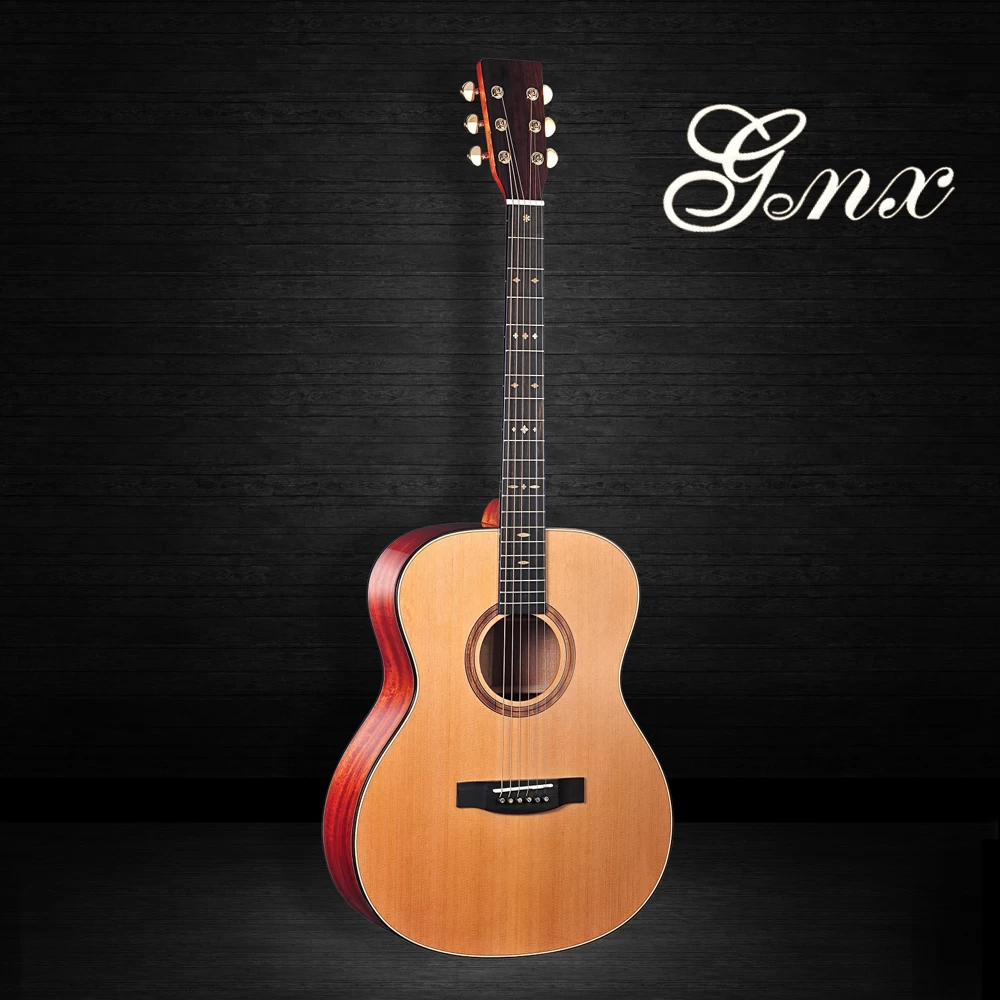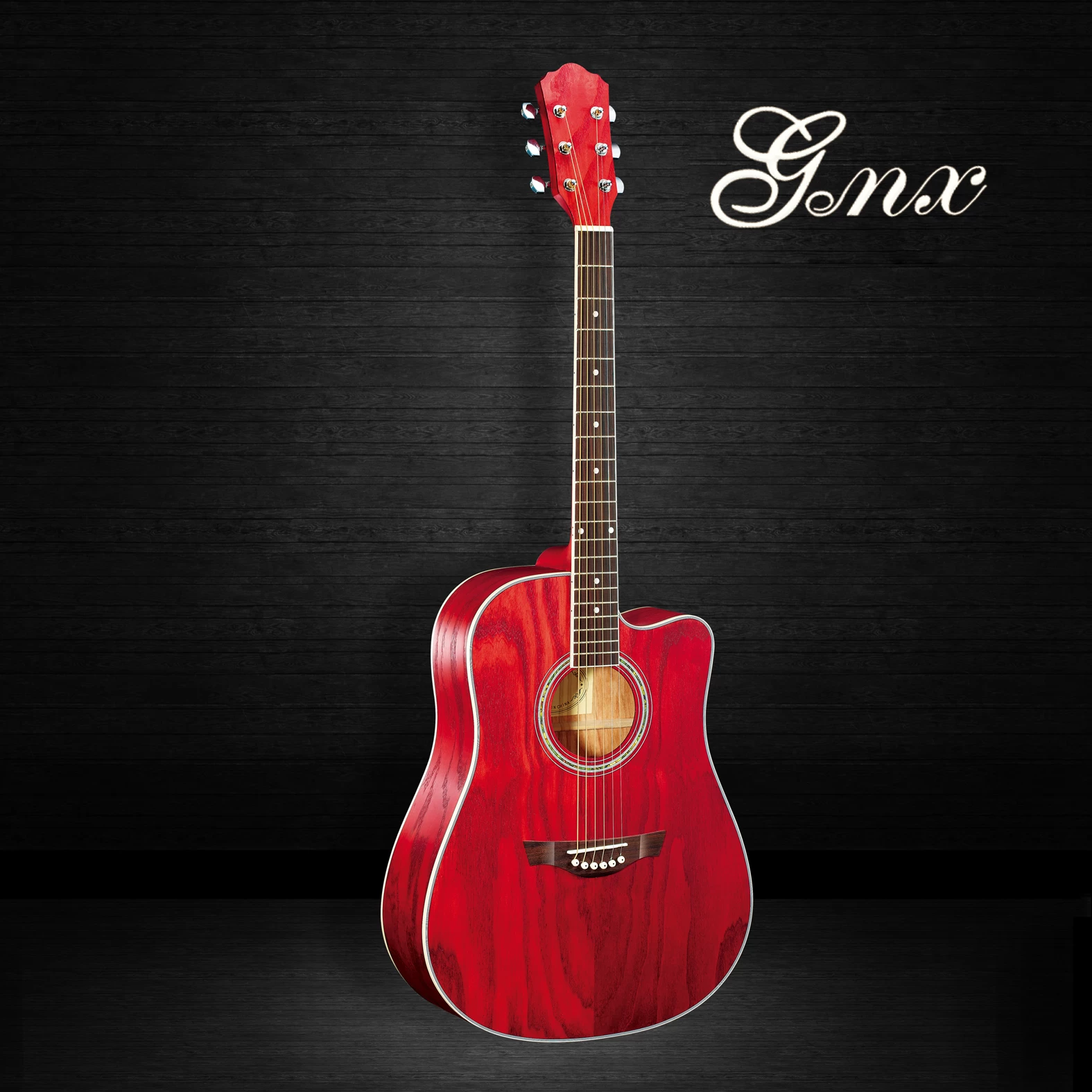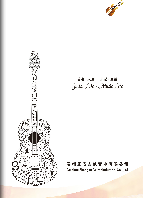Bass guitar
2018-04-20 13:15:54

1930s–1940s[edit]
Musical instrument inventor Paul Tutmarc outside his music store in Seattle, Washington
In the 1930s, musician and inventor Paul Tutmarc of Seattle, Washington, developed the first electric string bass in its modern form, a fretted instrument designed to be played horizontally. The 1935 sales catalog for Tutmarc's electronic musical instrument company, Audiovox, featured his "Model 736 Bass Fiddle", a four-stringed, solid-bodied, fretted electric bass instrument with a 30 1⁄2-inch (775-millimetre) scale length.[8] The adoption of a guitar's body shape made the instrument easier to hold and transport than any of the existing stringed bass instruments. The addition of frets enabled bassists to play in tune more easily than on fretless acoustic or electric upright basses. Around 100 of these instruments were made during this period.[9]
Around 1947, Tutmarc's son, Bud, began marketing a similar bass under the Serenader brand name, prominently advertised in the nationally distributed L. D. Heater Music Company wholesale jobber catalogue of 1948. However, the Tutmarc family inventions did not achieve market success.
1950s[edit]
An early Fender Precision Bass
In the 1950s, Leo Fender, with the help of his employee George Fullerton, developed the first mass-produced electric bass guitar.[10] Fender was the founder of Fender Electric Instrument Manufacturing Company, which made popular brands of electric guitars, basses and amplifiers. Fender's Fender Precision Bass, which began production in October 1951, became a widely copied industry standard for the instrument. The Precision Bass (or "P-bass") evolved from a simple, un-contoured "slab" body design and a single coil pickup similar to that of a Telecaster, to a contoured body design with beveled edges for comfort and a split single coil pickup.
Design patent issued to Leo Fender for the second-generation Precision Bass
The "Fender Bass" was a revolutionary new instrument for gigging musicians. In comparison with the large, heavy upright bass, which had been the main bass instrument in popular music, folk and country music from the early 1900s to the 1940s, the Fender bass could be easily transported to shows. The bass guitar was also less prone to unwanted feedback sounds when amplified, than acoustic bass instruments.[11] In 1953 Monk Montgomery became the first bass player to tour with the Fender bass guitar, in Lionel Hampton's postwar big band.[12] Roy Johnson, and Shifty Henry with Louis Jordan & His Tympany Five, were other early Fender bass pioneers.[10] Bill Black, playing with Elvis Presley, switched from upright bass to the Fender Precision Bass around 1957.[13] The bass guitar was intended to appeal to guitarists as well as upright bass players, and many early pioneers of the instrument, such as Carol Kaye and Joe Osborn, were originally guitarists.[14]
In 1953, following Fender's lead, Gibson released the first short scale violin-shaped electric bass, with an extendable end pin so a bassist could play it upright or horizontally. Gibson renamed the Electric Bass in 1958 to the EB-1.[15] Also in 1958 Gibson released the maple arched top EB-2 described in the Gibson catalogue as "A hollow-body electric bass that features a Bass/Baritone pushbutton for two different tonal characteristics".[16] In 1959 these were followed by the more conventional-looking EB-0 Bass. The EB-0 was very similar to a Gibson SG in appearance (although the earliest examples have a slab-sided body shape closer to that of the double-cutaway Les Paul Special).
Gibson EB-3
Whereas Fender basses had pickups mounted in positions in between the base of the neck and the top of the bridge, many of Gibson's early basses featured one humbucking pickup mounted directly against the neck pocket. The EB-3, introduced in 1961, also had a "mini-humbucker" at the bridge position. Gibson basses also tended to be smaller, sleeker instruments; Gibson did not produce a 34-inch (864 mm) scale bass until 1963 with the release of the Thunderbird, which was also the first Gibson bass to use dual-humbucking pickups in a more traditional position, about halfway between the neck and bridge. A number of other companies also began manufacturing bass guitars during the 1950s: Kay in 1952, Hofner and Danelectro in 1956, Rickenbacker in 1957 and Burns/Supersound in 1958.[13]
1956 saw the appearance at the German trade fair "Musikmesse Frankfurt" of the distinctive Höfner 500/1 violin bass made using violin construction techniques by Walter Höfner, a second generation violin luthier.[17] The instrument is often known as the "Beatle Bass", due to its endorsement and use by Beatles bassist Paul McCartney. In 1957 Rickenbacker introduced the model 4000 bass,[18] the first bass to feature a neck-through-body design in which the neck is part of the body wood. The Fender and Gibson versions used bolt-on and glued-on necks.
1960s[edit]
With the explosion of the popularity of rock music in the 1960s, many more manufacturers began making electric basses, including the Japanese manufacturers Yamaha, Teisco and Guyatone. First introduced in 1960, the Fender Jazz Bass was known as the Deluxe Bass and was meant to accompany the Jazzmaster guitar. The Jazz Bass (often referred to as a "J-bass") featured two single-coil pickups, one close to the bridge and one in the Precision bass' split coil pickup position. The earliest production basses had a 'stacked' volume and tone control for each pickup. This was soon changed to the familiar configuration of a volume control for each pickup, and a single, passive tone control. The Jazz Bass' neck was narrower at the nut than the Precision bass — 1 1⁄2 inches (38 mm) versus 1 3⁄4 inches (44 mm) — allowing for easier access to the lower strings and an overall spacing and feel closer to that of an electric guitar, allowing trained guitarists to transition to the bass guitar more easily.
1970s Fender Jazz Bass with maple fretboard
Another visual difference that set the Jazz Bass apart from the Precision is its "offset-waist" body. Pickup shapes on electric basses are often referred to as "P" or "J" pickups in reference to the visual and electrical differences between the Precision Bass and Jazz Bass pickups.
Fender also began production of the Mustang Bass; a 30-inch (762 mm) scale length instrument used by bassists such as Tina Weymouth of Talking Heads and Bill Wyman of The Rolling Stones ("P" and "J" basses have a scale length of 34 inches (864 mm), a design echoed on most current production electric basses of all makes). In the 1950s and 1960s, the instrument was often called the "Fender bass", due to Fender's early dominance in the market. The Fender VI, a baritone guitar, was tuned one octave lower than standard guitar tuning. It was released in 1961, and was favored by Jack Bruce of Cream.[19]
Gibson introduced the short-scale 30 1⁄2-inch (775 mm) EB-3 in 1961, also used by Jack Bruce.[20]
1970s[edit]
Rickenbacker 4001 bass
In 1971, Alembic established the template for what became known as "boutique" or "high-end" electric bass guitars. These expensive, custom-tailored instruments, as used by Phil Lesh, Jack Casady, and Stanley Clarke, featured unique designs, premium hand-finished wood bodies, and innovative construction techniques such as multi-laminate neck-through-body construction and graphite necks. Alembic also pioneered the use of onboard electronics for pre-amplification and equalization. Active electronics increase the output of the instrument, and allow more options for controlling tonal flexibility, giving the player the ability to amplify as well as to attenuate certain frequency ranges while improving the overall frequency response (including more low-register and high-register sounds). 1973 saw the UK company Wal begin production of a their own range of active basses, and In 1974 Music Man Instruments, founded by Tom Walker, Forrest White and Leo Fender, introduced the StingRay, the first widely produced bass with active (powered) electronics built into the instrument. Basses with active electronics can include a preamplifier and knobs for boosting and cutting the low and high frequencies.
Specific bass brands/models became identified with particular styles of music, such as the Rickenbacker 4001 series, which became identified with progressive rock bassists like Chris Squire of Yes, and Geddy Lee of Rush, while the StingRay was used by funk/disco players such Louis Johnson of the funk band The Brothers Johnson and Bernard Edwards of Chic. The 4001 stereo bass was introduced in the late 1960s; it can be heard on from the Beatles "I Am The Walrus". [21]
In the mid-1970s, Alembic and other boutique bass manufacturers, such as Tobias, produced four-string and five-string basses with a low "B" string. In 1975, bassist Anthony Jackson commissioned luthier Carl Thompson to build a six-string bass tuned (low to high) B0, E1, A1, D2, G2, C3. In comparison with a standard four-string bass, Jackson's six-string adds a low B string and a high C string. These 5 and 6-string "extended-range basses" would become popular with session bassists as they reduced the need for re-tuning to alternate detuned configurations like "drop D", and also allowed the bassist to play more notes from the same position on the fretboard with fewer shifts up and down the fingerboard, a crucial benefit for a session player sightreading basslines at a recording session.
1980s–present[edit]
Early 1980s-era Steinberger headless bass. The tuning machines are at the heel of the instrument, where the bridge is usually located.
In the 1980s, bass designers continued to explore new approaches. Ned Steinberger introduced a headless bass in 1979 and continued his innovations in the 1980s, using graphite and other new materials and (in 1984) introducing the TransTrem tremolo bar. In 1982, Hans-Peter Wilfer founded Warwick, to make a European bass, as the market at the time was dominated by Asian and American basses. Their first bass was the Streamer Bass, which is similar to the Spector NS. In 1987, the Guild Guitar Corporation launched the fretless Ashbory bass, which used silicone rubber strings and a piezoelectric pickup to achieve a "upright bass" sound with a short 18-inch (457 mm) scale length. In the late 1980s, MTV's "Unplugged" show, which featured bands performing with acoustic instruments, helped to popularize hollow-bodied acoustic bass guitars amplified with piezoelectric pickups built into the bridge of the instrument.
During the 1990s, as five-string basses became more widely available and more affordable, an increasing number of bassists in genres ranging from metal to gospel began using five-string instruments for added lower range—a low "B" string. As well, onboard battery-powered electronics such as preamplifiers and equalizer circuits, which were previously only available on expensive "boutique" instruments, became increasingly available on mid-priced basses. From 2000 to the 2010s, some bass manufacturers included digital modelling circuits inside the instrument on more costly instruments to recreate tones and sounds from many models of basses (e.g., Line 6's Variax bass). A modelling bass can digitally emulate the tone and sound of many famous basses, ranging from a vintage Fender Precision to a Rickenbacker. However, as with the electric guitar, traditional "passive" bass designs, which include only pickups, tone and volume knobs (without a preamp or other electronics) remained popular. Reissued versions of vintage instruments such as the Fender Precision Bass and Fender Jazz Bass remained popular amongst new instrument buyers up to the 2010s. In 2011, a 60th Anniversary P-bass was introduced by Fender, along with the re-introduction of the short-scale Fender Jaguar Bass.
Anterior : Como usar técnicas de visualização para um desempenho bem-sucedido









